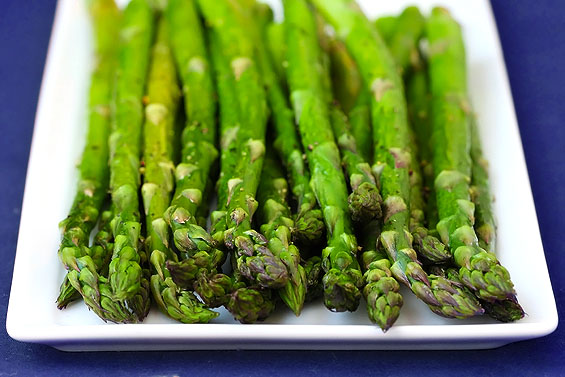
Thyroid cancer diagnoses rates are increasing, especially among young women. Many thyroid cancer patients undergo radioactive iodine treatment, a.k.a. RAI-131. I have done so twice and learned along the way about how to cope with the seemingly bizarre low-iodine diet.
When I was going through preparation for radioactive iodine treatment, the list of permitted foods on the low-iodine diet seemed grim. Low-iodine diet cookbooks only made me feel worse; I am simple, lazy cook, adverse to complicated recipes and substitutions. Plus, I didn’t want my shopping lists, recipes, or meals to remind me that I was on a freaky diet and a young adult suffering from thyroid cancer.
What worked best was to prepare foods and recipes I already liked and normally consumed that also happened to fit into the diet. I was surprised how many there were. I’ll share a few in upcoming posts, but my favorite were roasted vegetables. These easy tips will give you a lot of different dishes from this one simple cooking method:
ROASTED VEGETABLES
* Before roasting your veggies, check with your doctor to see what vegetables you are allowed and if you can have olive oil and NON-iodized salt. Diets can vary from doctor to doctor so be sure to ask!
* I particularly liked roasted carrots, asparagus, sweet potato, and butternut squash for the bright color and flavor they added to this often bland diet.
* It’s boring eating mixed roast veggies meal after meal, so I cooked and ate each kind of veggie separately: Roast carrots at lunch, roast asparagus at dinner.
* Roasted carrots really satisfy a sweet tooth craving. They’re no substitute for chocolate peanut butter pie, but they’ll help get you through.
* Parsnips, zucchini, mushrooms, beets also roast well. And, asparagus tastes great with a squeeze of lemon!
HOW TO ROAST
1. Wash your vegetables and dry very well. (Extra water on your veggies will prevent the oil from coating well and you won’t get as good of a roast.)
2. Cut your pieces in uniform sizes so they roast evenly.
3. In the biggest bowl you can find, toss vegetables with olive oil and NON-IODIZED salt. (Check with your doctor first to make sure you are allowed non-iodized salt.) Tossing in the biggest bowl possible really helps give an even and thorough coating of olive oil.
4. Place roasted veggies on a rimmed baking sheet or in a shallow baking dish. And bake in the oven at 400.
5. Cooking time depends on the vegetable and how thickly they are sliced. Cook until very tender. Taste a veggie. If it melts in your mouth and makes you smile, it is done.
![]()
![]()
 “Everything Changes is, without doubt, the most forthright, emotionally sophisticated, and plain-old valuable book of its kind I've seen.”
“Everything Changes is, without doubt, the most forthright, emotionally sophisticated, and plain-old valuable book of its kind I've seen.”












